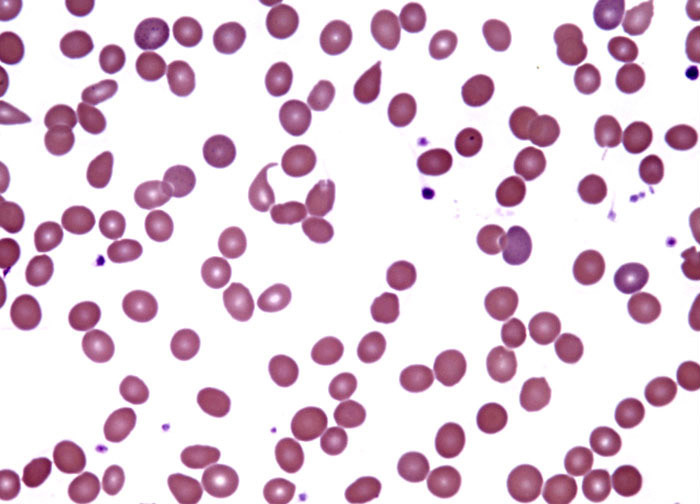
Hemolytic Anemia at 40x Magnification
Red blood cells develop in the bone marrow and, in a typical healthy human, survive in the circulatory system for 100 to 120 days. The premature breakdown of red blood cells, an event that can occur due to a wide range of disorders and conditions, is known as hemolysis. When the bone marrow of an individual is unable to produce enough red blood cells to offset those that are precipitately lost, hemolytic anemia ensues. In instances of mild hemolytic anemia, the patient may be asymptomatic, but in severe cases, one’s life can become endangered. The elderly and people with cardiovascular problems are at greatest risk of death from hemolytic anemia, but overall the mortality rate associated with the disease is quite low. Some of the most common symptoms of hemolytic anemia include weakness, fatigue, darkened urine, pallor, jaundice, shortness of breath, fever, confusion, and rapid heart rate.













